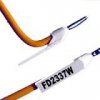LOL, you guys are beast!For learning ,
the way to go is building the linear P.S using only transistors,diodes and op. amps ,
no 3 pins regulator ICs at all.
I saw this the other day:
LOL, you guys are beast!For learning ,
the way to go is building the linear P.S using only transistors,diodes and op. amps ,
no 3 pins regulator ICs at all.
Ha! If going to that extreme, build the op-amps, too, using discrete transistors and resistors and perhaps a few capacitors. And diodes! Loved your post on the XL741 @chopnhack!... For learning ,
the way to go is building the linear P.S using only transistors,diodes and op. amps ,
no 3 pins regulator ICs at all.
Since you have already demonstrated the capability to have PC boards manufactured on a previous thread, I would go the professional PCB route. But do a prototype first. Do what you did before and upload schematics and board layouts for our inspection, criticism, and inspection. A few iterations should get you to the point where you can confidently order one or more boards. You may be able to get by with a single board design, depending on circuit complexity and bells and whistles you end up including in the design. From a maintenance view, separate boards for each power supply output would be easiest to troubleshoot and repair. Pay attention to how you get power in and out of the board(s). I like those screw-terminal blocks that you can solder directly to the board and use ferrules soldered or crimped onto the ends of the stranded wires.A challenge, dead bug or professional pcb?


I think it would work. The one I used was several hundred dollars and was made for crimping wires to pins inserted in a high-density circular bulkhead connector. I re-purposed it to crimp ferrules, but the tool you found is not only inexpensive it also appears to be designed to crimp wire ferrules! Maybe I will buy one too, now that I know it won't break the bank. Good find!Would something like this work as a star crimper? Its reasonably priced.

... fails in a UPS is the gel-cell battery pack.
In that case I will keep it on there - I doubt I will have large loads, but I haven't spec'ed out a cap for the psu yet, and that cap can very well produce a large transient! Thanks for the explanation - I was going to say choke, but I didn't understand just what it was attenuating!It's called a "common mode" choke. It suppresses switching transients from inside the UPS getting back out on the power line.. either hot or neutral.
The cord alone is treasure, the rest is extra booty.Sounds like you have unearthed a real treasure chest thar, matey!
